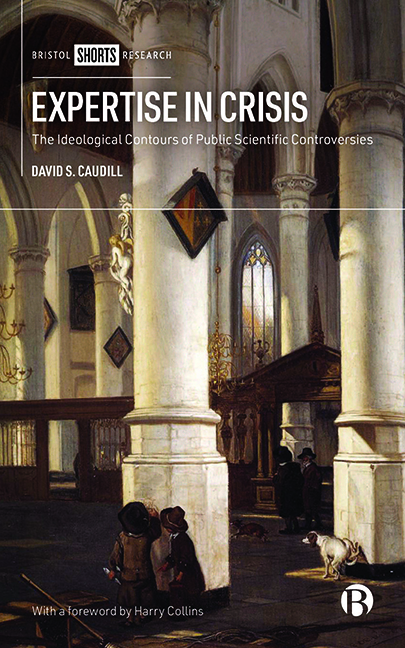Book contents
- Frontmatter
- Dedication
- Contents
- About the Author
- Acknowledgments
- Foreword
- Preface
- Introduction
- One What Caused, and How Do We Fix, Our Crisis?
- Two Worldviews as “Religious” Frameworks
- Three The Quasi-Religious Aspect of the Crisis
- Four Belief as a Form of Expertise
- Five Communicating across Worldviews
- Conclusion
- Notes
- References
- Index
Two - Worldviews as “Religious” Frameworks
Published online by Cambridge University Press: 18 January 2024
- Frontmatter
- Dedication
- Contents
- About the Author
- Acknowledgments
- Foreword
- Preface
- Introduction
- One What Caused, and How Do We Fix, Our Crisis?
- Two Worldviews as “Religious” Frameworks
- Three The Quasi-Religious Aspect of the Crisis
- Four Belief as a Form of Expertise
- Five Communicating across Worldviews
- Conclusion
- Notes
- References
- Index
Summary
Over two centuries ago, Thomas Paine confirmed that “religion” need not be associated with deistic beliefs and rituals: “The word religion is a word of forced application when used with respect to the worship of God. The root of the word is the Latin verb ligo, to tie or bind. From ligo, comes religo, to tie or bind over again, to make more fast.” In an effort to clarify a notion of “religion” as being analogous to any set of beliefs, values, and commitments that govern one’s life—what I am calling a “worldview” or “ideology”—it helps to revisit and consider the culture wars in Holland during the Protestant Reformation (16th–17th centuries) and continuing through the 19th century. There is a painting in the Metropolitan Museum of Art that reminds us of the two different worlds that Christian believers—Protestant and Catholic, respectively—occupied in 17th-century Holland. Golden Age art historians have noticed, both in that painting and in others, the Calvinist perspective on religion as a worldview affecting all of one’s life, rather than having to do primarily with worship, ritual, or prayer. In the 19th century, neo-Calvinist politicians used that unique conception of religion to argue that Enlightenment rationalism, as well as the ideology behind the French Revolution, were both religious in nature, involving beliefs that paralleled (and opposed) the Calvinists’ religious beliefs.
Revisiting a Dutch Golden Age painting
Wholly apart from complex doctrinal disagreements and the hidden prayers of believers, the religious fervor of the Reformation had a visual aspect:
The whitewashed walls of … Calvinist churches vividly call up the historical re-formation of religious space. … This type of space has been purified; as past visual practices were redefined as idolatry or superstition, it has been emptied of images, circumscribed by Calvinist prohibitions against the … reception, or veneration, of imagery.
My initial focus in this chapter is on the representation of two important features of Dutch Calvinism in the painting “Interior of the Oude Kerk, Delft,” a detailed study by Emanuel de Witte (1616–92) of an 11th-century, formerly Catholic church, with whitewashed walls and no images of Christ, nor of Mary or any other saint.
- Type
- Chapter
- Information
- Expertise in CrisisThe Ideological Contours of Public Scientific Controversies, pp. 36 - 46Publisher: Bristol University PressPrint publication year: 2023



